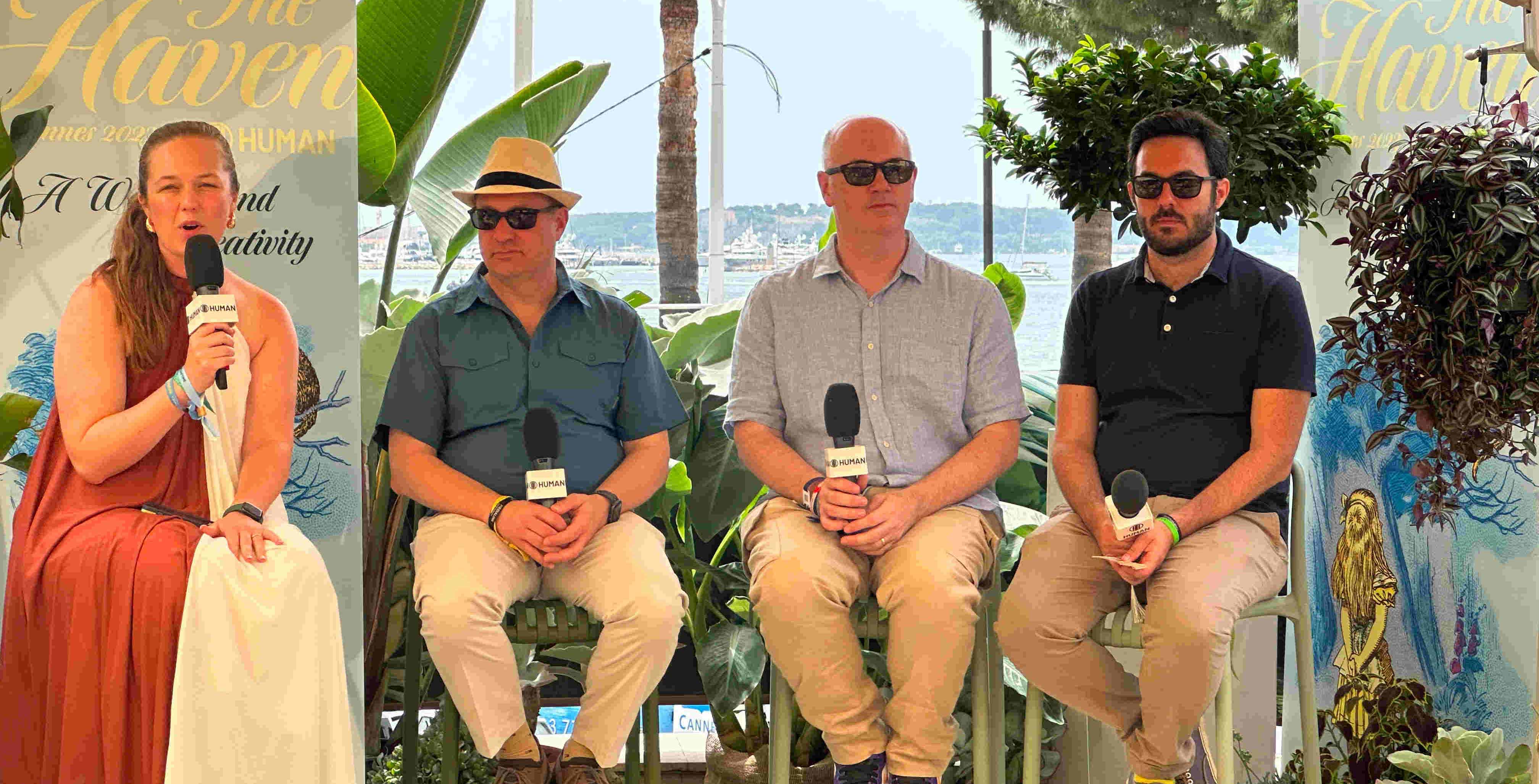The Cannes Lions 2023 are a Wrap!
After six sunny days on the Croisette, Team TRUSTX is back in NYC, energized by the people we met and the conversations we hosted. If you were able to join us for Programmatic Secrets, Lies and Disruption on Monday and/or Next-Gen Privacy and Data Protection: Learning from the Sins of the Past on Wednesday, we thank you for lending your voice to these important discussions. If you missed one or both events—or skipped Cannes altogether—we’ve assembled the CliffsNotes version for you.
Programmatic Secrets, Lies and Disruption
On the morning of Monday, June 19th, the ANA released its long-awaited Programmatic Media Supply Chain Transparency Study. Later that same day, we gathered some of the brightest minds in the industry to discuss the results over a breezy seaside lunch in Old Town. Among the unbelievable truths revealed, perhaps the most disquieting is this: among the 21 companies that participated, with $123M in ad spend and 35.5B impressions committed, the average campaign ran on 44,000 websites. More alarming still, Made for Advertising (MFA) websites represented 21% of impressions and consumed 15% of the spend.
For the advertisers who participated, that 15% equates to close to $20M in outright waste and this was just a test. It’s not hard to imagine that in the real world of programmatic media, the actual number is orders of magnitude greater.

So, What’s a Marketer to Do?
ANA President and CEO, Bob Liodice, kicked off the debate, citing the grave concerns that this first look research (the full report remains pending, with a Phase Two version in the works) illustrates for our industry. Media luminaries, Lou Paskalis and Tom Triscari, veteran reporter, Allison Schiff, and TRUSTX CEO, David Kohl, then took the stage, and, over the ensuing hour, laid out three simple, realistic next steps for any marketer concerned about what these results mean for their business.
- Establish an inclusion list and insist that your brand buy only from the listed domains. Your agency partners might tell you exclusion lists work just as well or better than inclusion lists. They do not. Attempting to run a successful, minimal-waste campaign using an exclusion list is like trying to count all the grains of sand on a beach: an exercise in futility. So while exclusion lists have become the norm in our industry, it is time to implement a more inclusion-focused approach.
- Buy through direct paths to programmatic supply—i.e., Brand (or Agency) to DSP to SSP to Publisher. Every extra reseller hop in the supply chain adds cost and reduces the likelihood that you’ll get what you think you’re buying. Confirm that you’re buying the actual publisher you’ve selected and not an MFA tile inside the publisher’s domain (a much bigger problem than most realize). Quality SSPs should be able to differentiate, but it’s vital to be aware of this pitfall and to ensure that your campaigns run on content native to the domain you purchase and not that of a third-party partner.
- Demand the data to validate that your media budget went to the publishers you specified. Log level data is the gold standard for verifying that your inclusion list was honored. Of course, if you’ve established a certain level of trust with your supply-side partners, detailed reporting may also suffice. Ask for data at whatever level of detail you need to be comfortable. And, if you hear the word, “no”, take your ad spend elsewhere.
The results of the ANA study more than likely came as a shock to many. We all knew that there was waste in the programmatic supply chain, but seeing that waste verified with hard numbers makes for an uncomfortable reality. Yet, as our panelists made clear, fixing the problem is a simple matter of the three steps we’ve outlined here. Marketers just need to be willing to take them. If only all business challenges were so easily solved!


Next-Gen Privacy & Data Protection: Learning from the Sins of the Past
Privacy. Identity. Data Security. Popular convention would have us believe that we can’t have it all, especially as 3rd-party cookies head for the dustbin of internet history. Our attempts to find a solution for all three have resulted in a fast-growing ecosystem of alternate IDs that mask underlying, highly-personal data — e.g., an email address or a phone number — and both are far more persistent than cookies ever were. Identity is still flowing through the bidstream, enriching the middlemen at the expense of publishers and advertisers, and making it near-impossible for consumers to opt out. Their data has already fed the algorithms. There is no undo button.
We decided that it’s high time we learn from the past. Confront our sins, so to speak (because admitting that you have a problem is the first step). Together, with our friends from Human Security, we staked out a spot at the l’Hôtel Barrière Le Gray d’Albion and invited a few disruptive thinkers to join us for a discussion on how we can reorg the ad tech ecosystem to the benefit of advertisers, publishers and consumers alike.

Sinners—aren’t we all?
Our panelists—TRUSTX CEO, David Kohl, Chief Strategy Officer of Raptive, Paul Bannister and Chief Product Officer of Freewheel, David Dworin—come from disparate corners of the industry but found themselves in immediate agreement on a few basic principles. First and foremost its time to start afresh when it comes to online identity so that advertisers can target real people (since bots don’t convert), publishers can monetize, and consumers (the genuine, human ones) can rest easy knowing that their privacy is respected and their data is secure. To get to that place, we’re going to need to blow a few things up. But what? And how? Over the course of a conversation moderated by HUMAN Product lead Kristine Lopez, a few ideas bubbled to the surface.- The deprecation of 3rd-party cookies isn’t the beginning of the end. It’s the end of the beginning. Privacy legislation in Europe and the US may have forced our collective hand, but the truth is that cookies were long past their sell-by date. The newest and most in-demand platform—CTV—never even made use of them in the first place. If we persist in perpetuating the infrastructure built around them, or, worse yet, forcing new platforms to retrofit themselves into an outdated paradigm, we are slowing progress to the detriment of all.
- 1:1 is a myth and a harmful one at that. The programmatic ecosystem was built on the promise of right-user-right-place-right-time. This was never a realistic concept. The data accuracy is questionable. The incentives in this industry are misaligned. Ultimately, it is scale that gets bought—not quality—and we’re spending a metric ton of money pursuing a level of precision that isn’t actually precise. iOS users—an estimated 50% of the US audience—are already invisible. When you add up these factors it is increasingly clear that 1:1 was an expensive pipe dream.
- Alternative IDs? Lipstick on a pig. We can all agree that 1st-party data is a precious asset and should be handled in a privacy-safe (vs. privacy-sick) way. Unfortunately, using alternate IDs to mask that personal data isn’t a foolproof option. 1st-party identifiers, like an email address or a phone number, are far more personal and persistent than any 3rd-party cookie—it’s much easier delete a cookie than to change one’s email or phone number. Nor does encryption guarantee that this data is secure once it enters the bidstream.
- Give cohorts a chance. Cookies are disappearing. Alternate IDs aren’t foolproof. Clean rooms are out of reach for most. Yet, relevance still matters. Google’s initial attempt with FLoC was flawed on many levels, but if we can learn to separate the concepts of identity and audience, there’s great promise in the cohort model. Publishers and advertisers should be seeking ways to create groups of deterministically-matched audiences—backed by each party’s 1st-party data—while keeping all forms of personal data safe from any other entity in the supply-chain. The future construct for ad targeting, frequency capping, measurement and attribution needs to evolve from individuals to anonymous cohorts. Doing so will obviate the need for data at the individual level, that is, assuming a 1:1 match was ever that important.






